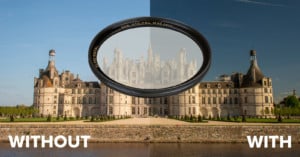
Moment Unveils Pro Quality Variable ND Filters for Cameras and Drones
Smartphone accessory maker Moment is breaking further out of its established niche today. The company—which recently expanded into drone accessories—is debuting Variable ND filters for cameras and drones that it claims "hit the sweet spot on affordability, functionality, and quality."






































